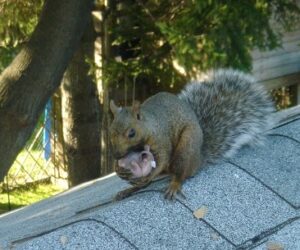Squirrel Society
Contrary to appearances, eastern gray squirrels are solitary creatures. Each has its own territory of up to a few acres where it spends time searching for food and loafing in trees. Although squirrels mark their territories with urine, the boundaries do overlap and individuals will squabble over food sources and den sites. Males (boars) and females (sows) look almost identical, with the only visible differences being in their reproductive organs. During the breeding season, these differences become quite obvious as increasing testosterone levels cause the male parts to swell. At other times of the year, the sexes can only be distinguished at close range.




